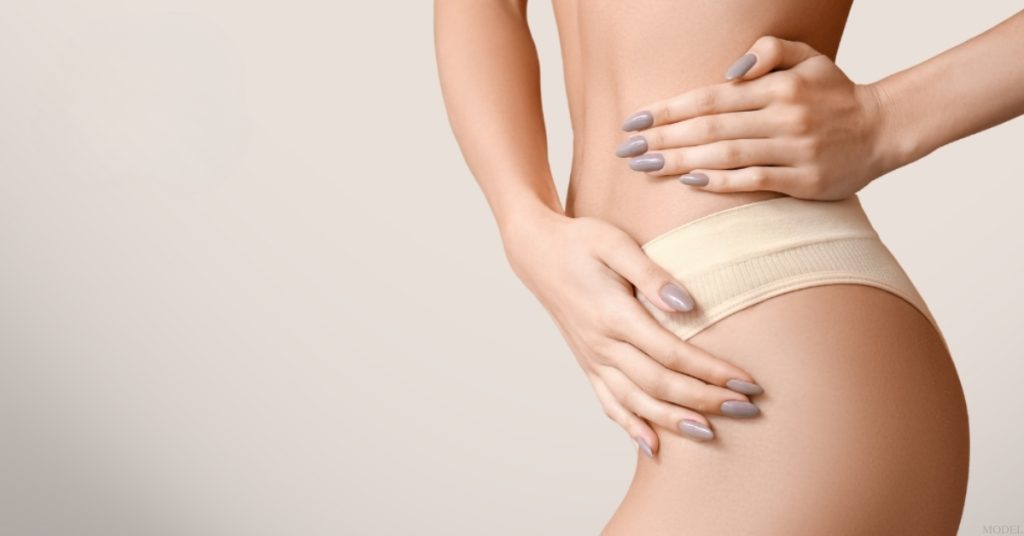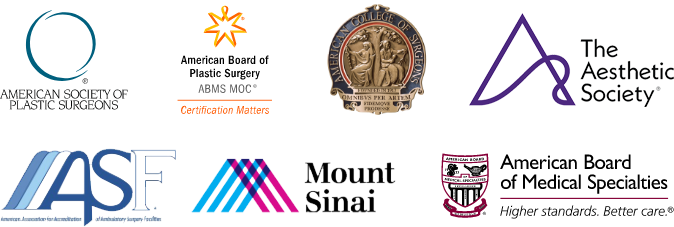Men and women considering a tummy tuck often worry about scars. While every surgical incision leaves a mark, careful planning and aftercare can greatly influence how your scar looks. Here’s what you can expect and how to help your scar fade well.
What Tummy Tuck Scars Usually Look Like
A standard tummy tuck scar is a horizontal line across the lower abdomen, placed low enough to be hidden by underwear or swimwear. In many cases, the scar runs from hip to hip, though length varies based on how much skin and fat are removed. I ask my patients to wear the bathing suit or underwear they want to wear post-surgery and mark its outline in ink. This ensures the final scar stays within that boundary.
- Placement: The incision sits low on the abdomen, below most Csection scars, so the old scar is removed along with excess skin.
- Length: The scar is usually longer than a Csection scar but flatter and thinner because it is closed with buried sutures.
- Appearance over time: Initially, the scar may be red or slightly raised but tends to fade to a flatter, paler line over 6–12 months. Its final look depends partly on genetics and the body’s healing response.
For visual examples, see our before and after photos showing how well a tummy tuck scar can be concealed under swimwear.
What Affects How a Scar Heals
Several factors—both within and beyond your control—affect scar formation and healing:
- Genetics: Family history plays a role. People prone to keloids or hypertrophic scars may see thicker or raised scars.
- Age and skin tone: Older patients often form flatter, paler scars, while younger patients may have pinker, thicker scars. Darker skin tones may be more prone to hyperpigmentation.
- Scar placement: Scars hidden in natural creases tend to be less noticeable; scars over joints or areas of tension can widen or thicken.
- Tension on the incision: Pulling or stretching the area (for example, exercising too soon) can widen the scar.
- Lifestyle factors: Smoking restricts blood flow and slows healing. Proper nutrition, hydration, and avoiding nicotine support recovery.
While some elements of scar healing are out of your control, healthy habits and careful aftercare can go a long way in helping your scar fade more smoothly over time.
Tips To Minimize Scarring After Surgery
While you can’t change your genetics, you can control how you care for your incision. Here are some evidence-based tips:
Follow your surgeon’s instructions: Keep the incision clean and dry at first, and avoid submerging it until cleared.
Use silicone sheets or gel: Clinical studies show that silicone gel sheeting creates a moist environment that speeds epithelialization and reduces collagen buildup, leading to softer, flatter scars. Wear silicone sheets for at least 12 hours a day for 3–4 months, removing them only to shower.
Massage the scar: Begin gentle scar massage a couple of weeks after surgery, once the incision has closed. Massaging back and forth and in circles helps soften scar tissue and improve flexibility. share.upmc.com.
Consider paper tape: Hypoallergenic paper tape or Steri-Strips can reduce tension on the incision and prevent widening. Use these for at least 6 weeks postoperatively.
Protect from sun exposure: UV light can darken scars, making them more noticeable. Keep the area covered or use broad-spectrum sunscreen once the incision is healed.
Maintain a healthy lifestyle: Eat a balanced diet, stay hydrated, avoid nicotine, and manage underlying conditions like diabetes that can impair healing.
Scar maturation takes time—usually 6 to 18 months—so patience and consistent care are essential.
Why Surgical Skill Matters
The most significant factor in scar placement is the surgeon’s technique. Experienced plastic surgeons plan incision placement meticulously, close the wound in multiple layers, and ensure tension is evenly distributed along the incision line. This helps create a thinner scar and keeps it low enough to be hidden by swimwear or underwear. I take time to mark where your clothing sits so the scar stays concealed and the pubic area is rejuvenated without being pulled upward.
For additional strategies on hiding your scar once it has healed, read our post on how to hide your tummy tuck scars—even at the beach.
Reassurance and Realistic Expectations
While no surgeon can guarantee a completely invisible scar, there is a lot you and your doctor can do to minimize and control its appearance. Proper planning, careful surgical technique, and diligent aftercare produce scars that most people find easy to conceal. If you’re considering a tummy tuck and want to discuss scar management options, use our online form to request a consultation or call our office at (212) 249-4020 to schedule an appointment.
This blog post was originally written in August 2010 and updated in April 2025.





Leave a Reply